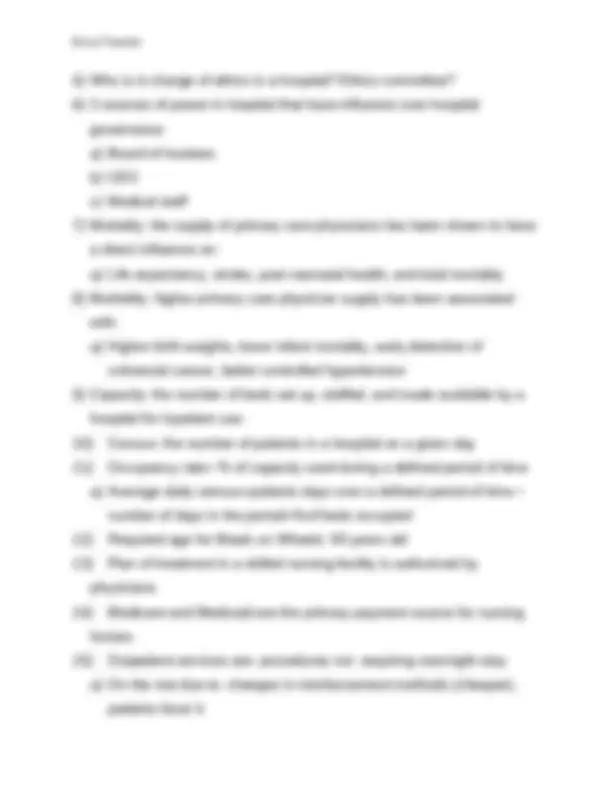




Study with the several resources on Docsity

Earn points by helping other students or get them with a premium plan


Prepare for your exams
Study with the several resources on Docsity

Earn points to download
Earn points by helping other students or get them with a premium plan
Community
Ask the community for help and clear up your study doubts
Discover the best universities in your country according to Docsity users
Free resources
Download our free guides on studying techniques, anxiety management strategies, and thesis advice from Docsity tutors
This study guide by erica traxler covers various aspects of hospitals and healthcare, including hospice care, types of hospitals, licensure, certification, accreditation, ethics, and hospital governance. Learn about hospice services, community, public, private non-profit, and private for profit hospitals, teaching hospitals, osteopathic hospitals, rehabilitation hospitals, psychiatric hospitals, and rural hospitals.
Typology: Study notes
1 / 4

This page cannot be seen from the preview
Don't miss anything!



ii) Must have: written agreement with general hospital for transfer of patients iii) Most services are delivered in private facilities and outpatient treatment centers h) Rehabilitation: provide therapeutic services to restore maximum function in patients i) Example: amputees, spinal cord or head injuries, stroke victims ii) Treatment usually after orthopedic surgery i) Children’s: facility designed for chronic, congenital, cardiac, and orthopedic pediatric problems i) Higher staff ratios then general hospitals j) Rural hospitals: treat larger percentage of poor and elderly patients i) Located in a county that is not a part of a metropolitan statistical area (MSA) ii) Often have financial troubles k) Teaching hospitals: offer 1 or more graduate residency programs approved by the American Medical Association l) Osteopathic hospitals: community general hospitals i) 200 in U.S., holistic approach in addition to traditional allopathic approach 4) Mandatory or Voluntary? a) Licensure: MANDATORY overseen by state, must be licensed to operate b) Certification: allows hospitals to participate with Medicare/Medicaid i) Compliance with federal “Conditions of Participation” is necessary c) Accreditation: JCAHO accredits a variety of health care facilities VOLUNTARY?
16) Conditions that qualify home health: change dressings, medication monitoring, short-term rehab, homemaker services, durable medical equipment